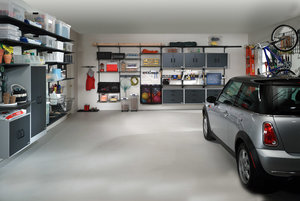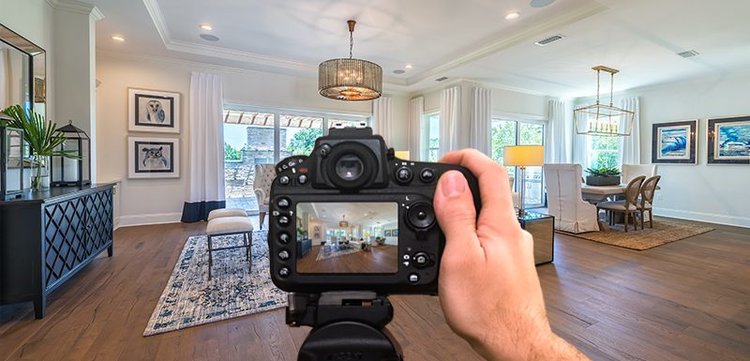Lakeshore Lifeworks 2021

Thanks to this amazing group of ART Realty REALTORS (and spouses!) we were able to help with several renovation projects at Lakeshore Lifeworks last Saturday. Lakeshore Lifeworks is a great organization and one ART Realty is supporting with a portion of closings from Jan-Mar 2021. Check them out at https://www.lakeshorelifeworks.org/. #welovegivingback#ARTREALTY#SpendingASaturdayForOthers





Kids Food Basket 2021

From April through June ART REALTY will donate a portion of each closing to KIDS FOOD BASKET. We also pledge to create 500 (or more) Supper Packs. We invite you to join us to reach our goal! Together we can make a difference!

Preparing to sell your Home


Exterior
The condition of your home’s exterior is most important when it comes to buyer appeal.
- Touch up trim paint on doors, window frames, fascia, etc.
- If your lawn shows no signs of life, a little fertilizer and some water will do wonders for its color.
- Mow and edge the lawn frequently until the home is sold.
- Overgrown shrubbery should be cut back to show as much of the exterior as possible.
- A low-cost investment in seasonal flowers or ground cover will add a personal touch.
- Replace missing shutters, gutters, and downspouts and remove any debris.
- Inspect the roof for necessary repairs and any visible broken shingles or tiles.
- Cracks in the driveway and sidewalks can be easily repaired with ready-mix cement.
- For excessive stains, there are easy-to-use cleaning agents at your home repair store.
- Stucco water stains can be repaired using a mild bleaching agent.
- Fences should be mended and painted.
- Wash all windows inside and outside.

Living Area
Clean your home from top to bottom.
- Repair any cracks or holes in walls and touch-up paint.
- Doors should be cleaned and touched-up as well. All torn screens should be repaired or replaced
- Avoid repainting the entire house unless current colors are very loud or offbeat. White or light pastels are the easiest for new homeowners to work with and they make your rooms look larger.
- Have carpeting and draperies cleaned.
- Carpeting should be vacuumed throughout the house the day your home is being shown.
- If you have a fireplace, make sure all tile is in good condition, the screen is in good shape, and the hearth is clean.
- Lubricate squeaking doors, windows, and cabinets.
- Put deodorizers in each room and closet.
- Store out-of-season clothes so closets do not look cluttered.
- Pre-pack items, which may clutter your home and make rooms appear smaller.
- A few colorful plants will help liven and add color to the interior.

Kitchen
The kitchen is one of the most important rooms in the house.
- Keep the counters clean and clear of appliances.
- All appliances should be clean and neatly organized.
- An open appearance with sunlight and green plants here and there will make the room a focal point.
- Make it light and bright!
- Never leave dirty dishes in the sink.
- Clean and wax the kitchen floor. If the floor looks old and dull, consider replacing the flooring.
- Clean fans and vent hoods.

Bathroom
All bathroom appliances should be thoroughly cleaned.
- Remove stains from sinks, toilets, and bathtubs.
- Replace old caulking around bathtub and sinks.
- Repair or replace leaky faucets.
- Unclog and sanitize drains to remove odors.
- Clean all mirrors.
- Keep all toilet seat lids closed.
- Fresh towels should be in the bathrooms at all times.

Garage, Basement & Attic
Have a garage sale to dispose of any unwanted items.
- Family heirlooms, which you will take with you, should be boxed and stored in the garage until you move.
- Degreasers are available at your local home repair store to remove stains from the garage floor.
- Remove any cobwebs.
- If the basement or attic is a functioning part of the house, make sure the area is clean and in good repair.
Preparing for the Photoshoot

HOW TO Prepare for the Photoshoot
With the majority of buyers shopping for homes online, high-resolution slide shows and video tours are a must. Here’s how to make your home shine on camera.
- Understand the camera’s perspective. The camera’s eye is different from the human eye. It magnifies clutter and poor furniture arrangement so that even a home that feels comfortable in person can look jumbled online.
- Make it spotless. Cameras also tend to magnify grime. Don’t forget floor coverings and walls; a spot on a rug might be overlooked during a regular home showing, but it could become a focal point online.
- Know what to leave. You want to avoid clutter, but try to have three items of varying heights on each surface. On an end table you can place a tall lamp (high), a small plant (medium), and a book (low).
- Snap practice pictures with your own camera. This will give you an idea of what the home will look like on camera before the photographer shows up. Examine the photos and make changes to improve each room’s appearance, such as opening blinds to let in natural light, removing magnets from the refrigerator, or taking down distracting art.
- Pare down. Removing one or two pieces of furniture from each room, even if just for the shoot, can make your space appear large on screen.
- Rearrange. Spotlight the flow of your space by creating a focal point on the furthest wall from the doorway and arranging the other pieces of furniture to make a triangle shape. The focal point may be a bed in a bedroom or a china cabinet in a dining room.
- Accessorize. Include a healthy plant in every room; the camera loves greenery. Energize bland décor by placing a bright vase on a mantle or draping an afghan over a couch.
- Keep the home in shape. Buyers who liked what they saw online expect to encounter the same home in person.

What to Know about Credit Scores

WHAT TO KNOW About Credit Scores
Credit scores range between 200 and 850, with scores above 620 considered desirable for obtaining a mortgage. The following factors affect your score:
Your payment history.
Did you pay your credit card bills on time? Bankruptcy filing, liens, and collection activity also affect your history.
How much you owe and where.
If you owe a great deal of money on numerous accounts, it can indicate that you are overextended. However, spreading debt among several accounts can help you avoid approaching the maximum on any individual credit line.
The length of your credit history.
In general, the longer an account has been open, the better.
How much new credit you have.
New credit—whether in the form of installment plans or new credit cards—is considered more risky, even if you pay down the debt promptly.
The types of credit you use.
Generally, it’s desirable to have more than one type of credit—such as installment loans, credit cards, and a mortgage.
ART Realty LLC 51 E Main Ave, Zeeland, MI 49454 Phone: 616-294-2354 E-Mail lisa@artrealty.com
The Path to Homeownership




 Facebook
Facebook
 X
X
 Pinterest
Pinterest
 Copy Link
Copy Link




